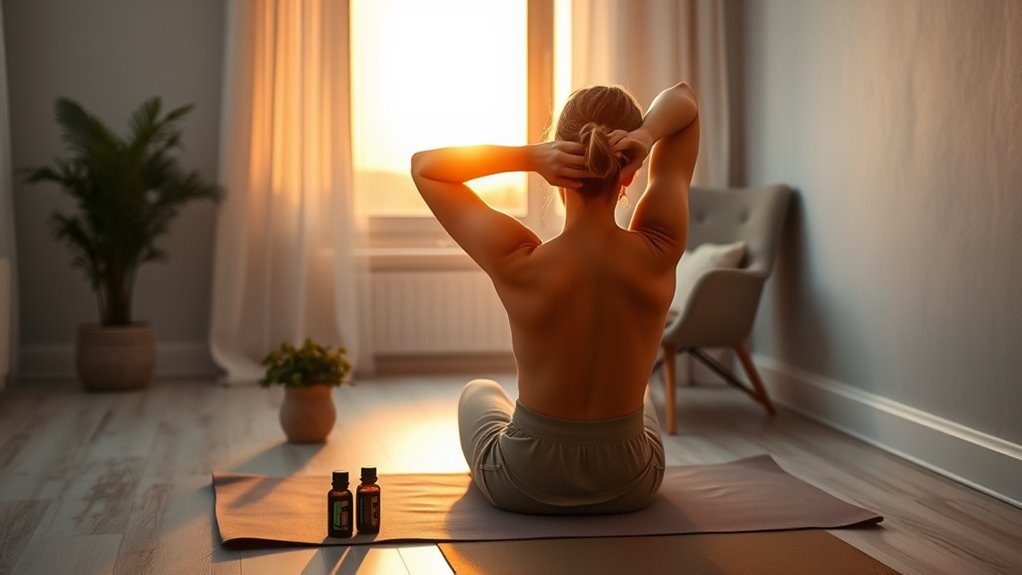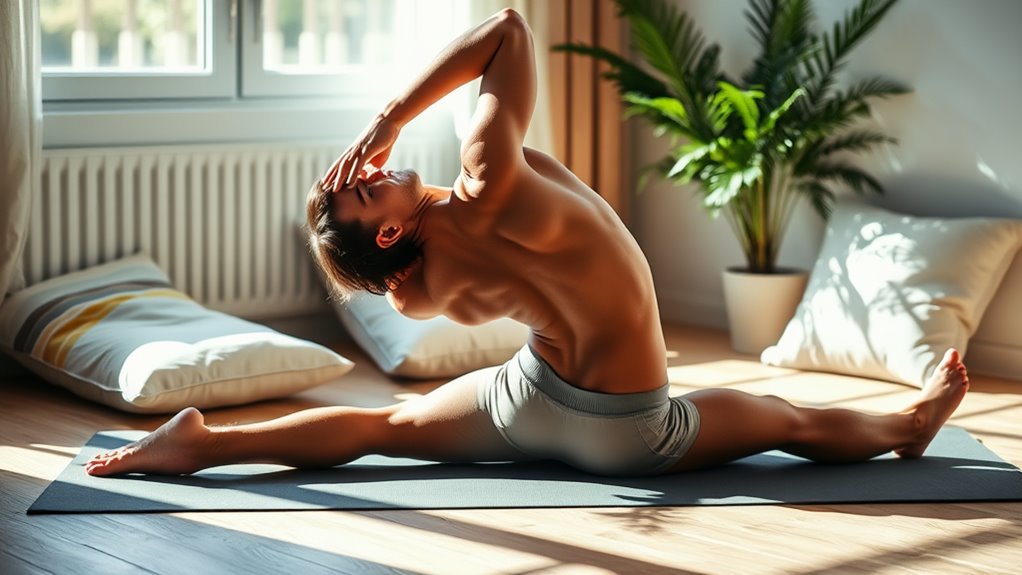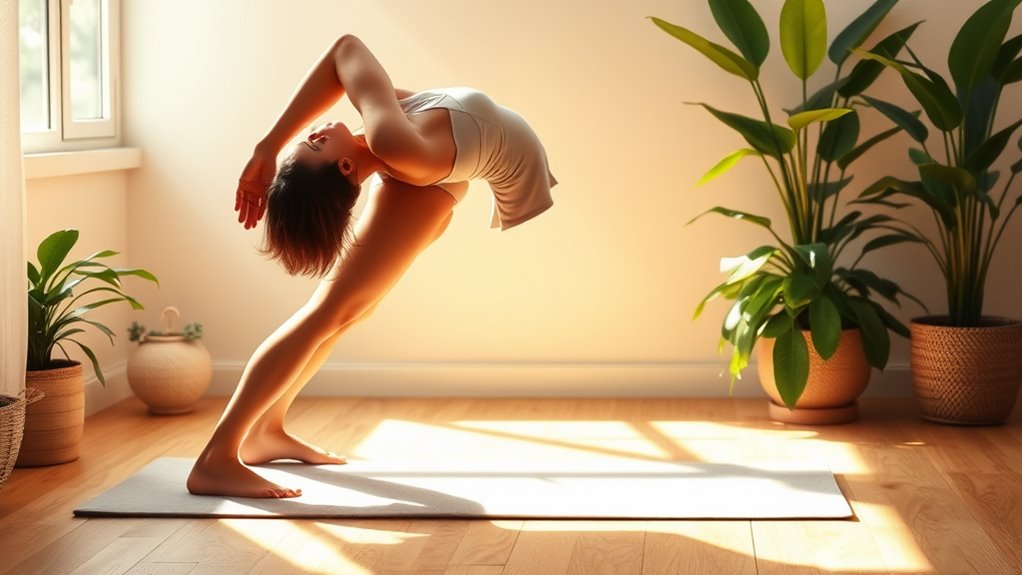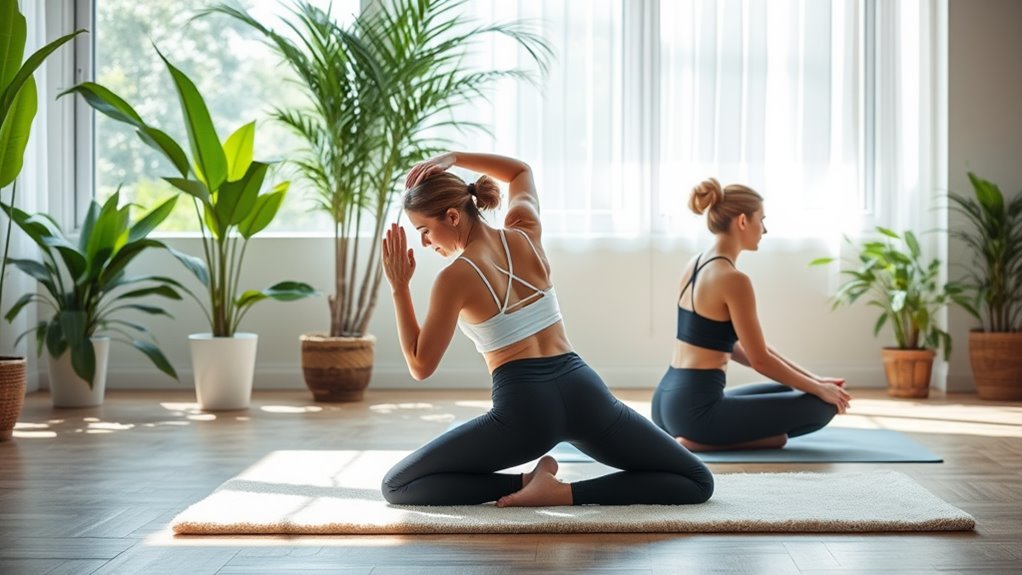Your Lower Back Pain Might Be Gone by Tonight-Here’s How!
If you’re struggling with lower back pain, you can find relief tonight by trying gentle stretching exercises like the knees-to-chest or child’s pose. Adjust your posture by sitting up straight and distributing your weight evenly. Implement self-care methods at home, such as using heat therapy and practicing mindfulness. If your pain persists or worsens, don’t hesitate to seek professional help. Discover more strategies and techniques to keep your back healthy and pain-free!
Understanding Lower Back Pain
Lower back pain can feel like an unwelcome companion in your daily life.
It’s frustrating, isn’t it? You might find simple tasks becoming a challenge, and that can wear on your spirit. Understanding the root causes can help you regain control.
Often, this pain stems from poor posture, muscle strain, or even stress. You’re not alone; many people experience this discomfort, and recognizing it’s a common issue can bring some comfort.
Don’t let it define you. By learning about your body and how it works, you empower yourself.
Consider how lifestyle choices, like your daily activities and habits, play a role in your pain. You’ve got the strength to tackle this challenge head-on and find relief.
You belong in a pain-free life.
Gentle Stretching Exercises for Instant Relief
When you’re dealing with lower back pain, incorporating gentle stretching exercises can provide instant relief.
These stretches not only ease discomfort but also foster a sense of community as you share your journey toward healing. You don’t have to do this alone!
Here are three simple stretches to try:
-
Knees to Chest: Lie on your back and gently pull your knees toward your chest, holding for 20-30 seconds.
-
Cat-Cow Stretch: Get on all fours and alternate between arching your back (cat) and dipping it (cow) for 30 seconds.
-
Child’s Pose: Sit back on your heels with your arms extended forward, holding for 30 seconds.
Proper Posture Techniques to Alleviate Discomfort
Maintaining proper posture is crucial if you want to alleviate discomfort in your lower back. When sitting, keep your feet flat on the floor, your knees at a 90-degree angle, and your back straight against the chair.
If you’re standing, distribute your weight evenly on both feet and engage your core. Make sure your shoulders are relaxed and aligned with your hips.
When lifting objects, bend at the knees, not the waist, to protect your spine. Remember, small changes can make a big difference.
By practicing these techniques, you’ll not only feel better, but you’ll also foster a supportive environment for your body.
Join others who prioritize good posture, and take a step toward a pain-free life together!
Self-Care Methods to Implement at Home
To effectively manage lower back pain at home, you can incorporate several self-care methods that promote healing and comfort.
These practices not only alleviate pain but also foster a sense of community as you take charge of your well-being.
-
Gentle Stretching: Incorporate stretches that target your lower back and hips to improve flexibility and reduce tension.
-
Heat Therapy: Use a heating pad or warm compress on your lower back to relax muscles and enhance blood flow.
-
Mindfulness and Meditation: Spend a few minutes daily practicing mindfulness or meditation to reduce stress, which can contribute to pain.
When to Seek Professional Help
Self-care methods can greatly help with managing lower back pain, but there are times when professional intervention is necessary. If your pain persists for more than a few days despite your efforts, it’s a sign to seek help.
Also, if you experience severe pain that radiates down your legs, numbness, or weakness, don’t hesitate to consult a healthcare provider. These symptoms might indicate a more serious issue that needs immediate attention.
Additionally, if your pain is accompanied by fever, unexplained weight loss, or changes in bowel or bladder control, reaching out to a professional is crucial.
Tips for Long-Term Back Health
While you might find temporary relief through various treatments, adopting habits that promote long-term back health is essential for preventing future pain.
You deserve to feel good and enjoy every moment, so here are some tips you can easily integrate into your daily life:
-
Stay Active: Engage in regular exercise like walking or swimming to keep your back strong and flexible.
-
Practice Good Posture: Be mindful of your posture when sitting, standing, or lifting. Proper alignment helps reduce strain on your back.
-
Invest in a Supportive Mattress****: A good mattress can make a world of difference in how you feel each morning.
Frequently Asked Questions
Can Stress Contribute to Lower Back Pain?
Yes, stress can definitely contribute to lower back pain. When you’re stressed, your muscles tense up, leading to discomfort. It’s important to find ways to relax and manage stress for your overall well-being and pain relief.
Are There Specific Sleeping Positions That Help Alleviate Back Pain?
Certain sleeping positions can ease your back pain. Try lying on your side with a pillow between your knees or on your back with a pillow under your knees. These positions support your spine and promote comfort.
How Does Hydration Affect Lower Back Pain?
Hydration plays a crucial role in reducing lower back pain. When you’re well-hydrated, your spinal discs stay lubricated, helping to cushion your spine. So, drink enough water daily to support your back health effectively.
Can Certain Shoes Worsen Lower Back Pain?
Yes, certain shoes can definitely worsen lower back pain. If your footwear lacks proper support or cushioning, it can lead to misalignment and added strain, making it crucial to choose shoes that promote comfort and stability.
Is It Safe to Exercise With Lower Back Pain?
Exercising with lower back pain can be tricky. It’s best to listen to your body and stick to gentle movements. You should consult a healthcare professional to ensure you’re staying safe while staying active.





